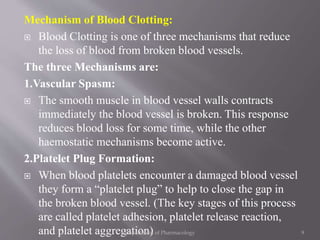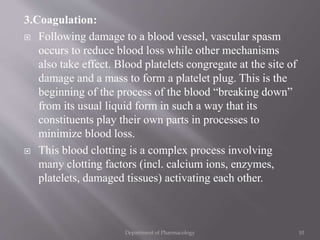The document discusses the mechanisms of hemostasis and blood coagulation, highlighting the importance of platelets and coagulation factors in stopping bleeding from injuries. It outlines risk factors for venous and arterial blood clots, symptoms based on clot location, and treatment options such as anticoagulants and thrombectomy. Additionally, it describes the processes involved in blood clot formation, including the intrinsic and extrinsic pathways that lead to the conversion of prothrombin to thrombin and ultimately to the formation of insoluble fibrin.

















